The Ocicat is a unique breed that looks like a wild cat but is 100% domestic.
Ocicats are not just beautiful, they also make excellent companions thanks to their active, social, and confident characters.
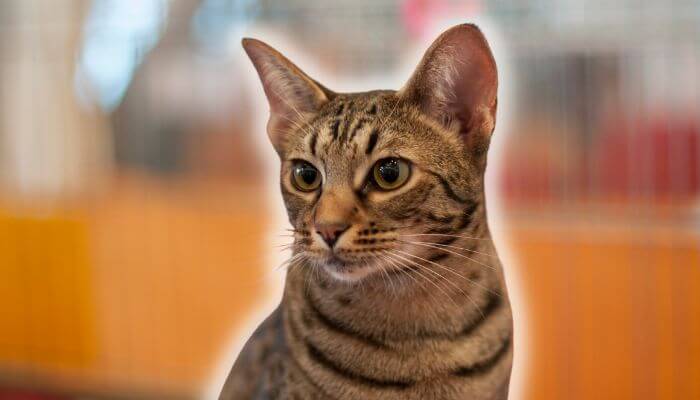
Contents
What is an Ocicat?
The Ocicat is a domestic cat breed that looks like a wild cat. Ocicats are large, muscular,and athletic with spotted fur.
Despite looking wild, Ocicats do not have any wild ancestry.
The breed was created accidentally when a breeder crossed an Abyssian and a Siamese cat.

Later, American Shorthair cats were crossed into the mix to give the Ocicat a silver colour as well as some of the bone structure seen in the breed.
Ocicats were first bred in 1964 and were first seen in the UKs in the 1980s.
| Typical Lifespan | 10-15 years |
| Average Weight | Male: 4.5 – 6.8kg Female: 3 – 5.4kg |
Ocicat Temperament
Ocicats are known for being active, social, and intelligent.
They can be taught a variety of tricks, will respond to their name, and can be walked on a lead.
Although Ocicats are outgoing they often form strong bonds with one person.
The Ocicat has many traits that are similar to the Abyssian and Siamese breeds. Particularly their fun-loving, cheerful, and people-oriented nature.

Ocicats will often get along with other animals in the home, including dogs.
Ocicats are chatty and will meow in response to their owners.
These cats love to supervise what’s happening at home, they will greet visitors, and they will demand attention when they feel like they aren’t getting enough.
These cats are incredibly agile so they enjoy keeping watch from higher spots, have impressive balance and will never say no to playtime.
Do Ocicats make good pets?
Yes, Ocicats make excellent pets as they are friendly, outgoing, and highly intelligent.
Ocicats are best suited to homes where they won’t be left alone for long periods of time as these cats are highly people-oriented.
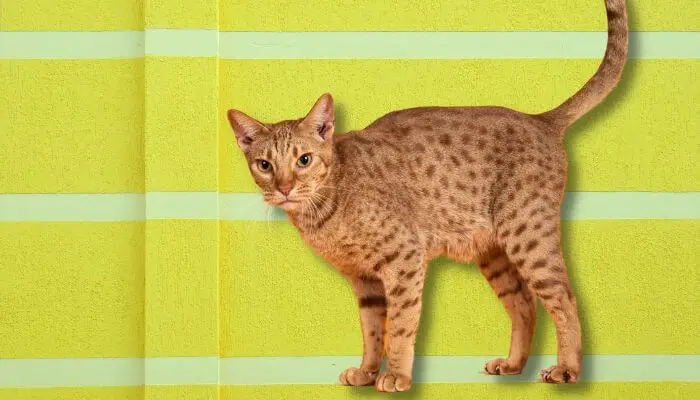
Ocicats can be mischievous if they get bored so they need enough physical and mental stimulation each day to keep them happy.
Top Tip: Thinking of getting a pet Ocicat but not sure what to call it? Read through our list of 100 Ocicat names for some inspiration.
Are Ocicats Hypoallergenic?
While no cat is truly hypoallergenic, Ocicats don’t shed much or produce a lot of dander so they are less likely to trigger allergies.
This breed is also known to produce less of the “Fel d 1” protein allergen.
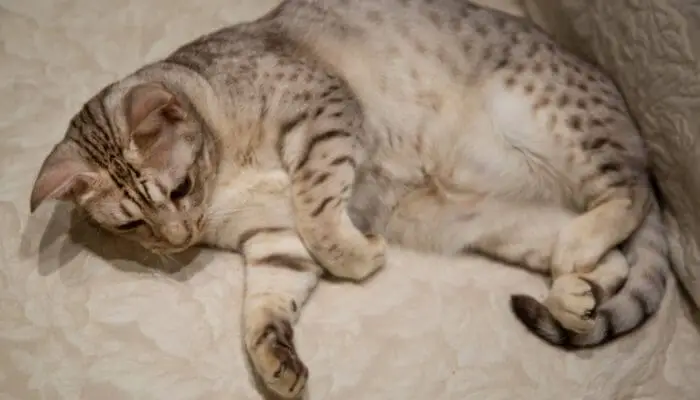
Another benefit of the Ocicat for allergy-sufferers is that the breed’s short coat is easy to groom.
A weekly brush is enough to keep them clean and happy.
Some owners simply rub them down with a chamois cloth to keep their coats shiny and free from dead hair.
Are Ocicats prone to any health problems?
While a generally healthy breed, Ocicats may suffer from renal amyloidosis, progressive retinal atrophy, and hypertrophic cardiomyopathy.
These issues appear in the breeds that were mixed to create the Ocicat.
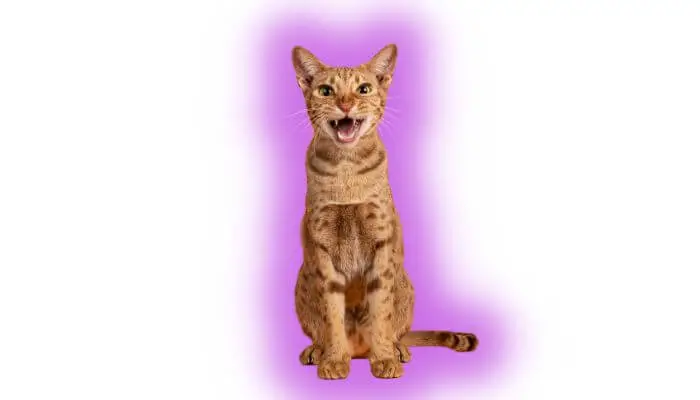
Parents should always be health tested prior to breeding to minimise health problems. Regular health checks, regular exercise, and a high-quality diet will help to keep Ocicats healthy.
How Big Do Ocicats Get?
Ocicats are medium – large cats that can weigh up to 6.8kg. They can measure up to 60cm in length and have an athletic build.
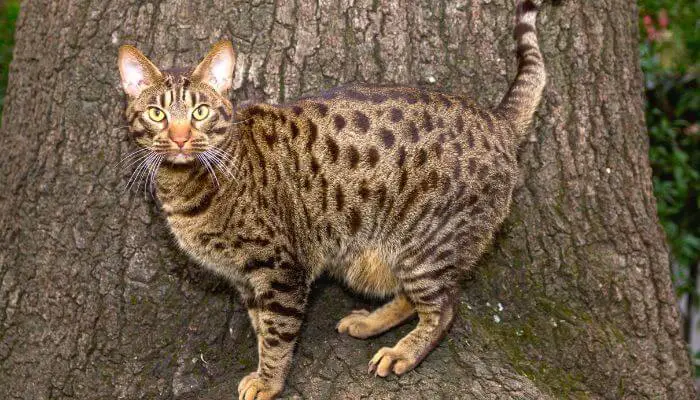
As with other breeds, the male Ocicats are often larger than the females.
Female Ocicats will generally weigh up to 5.4kg.
Types of Ocicat:
There are 12 Ocicat coat colourations:
1. Ebony Silver
Ebony Silver Ocicats have a silver agouti coat with black spots. They tend to have a dark nose, black paw pads and a black tail tip.
2. Tawny
Tawny is a brown spotted colouring. This can be bronze or beige agouti fur with dark brown or black spots. Tawny Ocicats usually have a black nose, black or dark brown paw pads, and a black tail tip.
3. Chocolate
This colouration is chocolate spotting on a copper agouti coat. A chocolate Ocicat has chocolate paw pads and a pink-rimmed chocolate nose.
4. Chocolate Spotted
Also known as chocolate silver, these Ocicats have chocolate-coloured spots on a lighter-coloured white/ agouti background.
5. Lavender
These Ocicats have lavender spots on a dark ivory or grey agouti coat. They have a lavender tail tip, lavender/ pink paw pads and a dark lavender nose with a pink rim.
6. Lavender Spotted
The Lavender colour is a diluted chocolate that looks almost purple. Lavender spotted is a light-coloured silver/ white Ocicat with lavender spots. These cats have a pink nose lined with dark lavender, pink paw pads and a lavender tail tip.
7. Blue
Blue Ocicats have a mushroom or pale agouti coat with blue spots. The blue colouration is a dilute of the tawny colour. Ocicats with this colour have a blue tail tip, blue paw pads, and their chocolate-coloured nose is pink rimmed.
8. Blue Silver
Blue silver is a dilute of the black colouration. These cats have a blue-silver coat with blue spotting. They usually have pink paw pads, a blue tail tip, and a pink-rimmed blue nose.
9. Cinnamon
The cinnamon colouration is a cinnamon spotting on a light cinnamon agouti coat. These cats have pink paw pads, a cinnamon-coloured tail tip, and a cinnamon nose.
10. Cinnamon Silver
Cinnamon Silver Ocicats have a cinnamon-silver coat with cinnamon spotting. They have pink paw pads, a cinnamon tail tip and a pink-rimmed cinnamon nose.
11. Fawn
The fawn colouration is a dilute of cinnamon. These cats have a pale agouti coat with fawn spotting. Fawn Ocicats have a fawn tail tip, a pink rimmed fawn nose and pink paw pads.
12. Fawn Silver
The final type of Ocicat coat is fawn silver. This is a light coloured fawn silver coat with fawn spots. This colouration comes with a fawn tail tip, a pink rimmed fawn nose and pink paw pads.
How can I tell if my cat is an Ocicat?
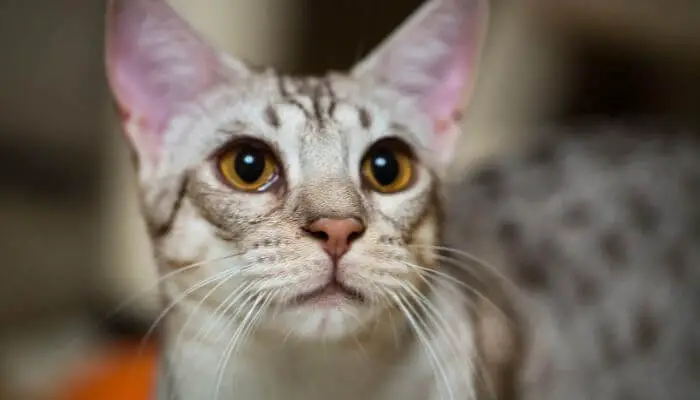
Ocicats have a few signature features that can help you recognise the breed:
1. Spotted Coat
One of the most recognisable features of the Ocicat is the short spotted coat. These spots cover their whole body and will be darker than the rest of the coat.
2. Dark Face Markings
Ocicats have dark face markings including black lines on their cheeks and around their eyes. You may also see black lines on their forehead.
3. Head Shape
Ocicats have a wedge-shaped head with large, triangular ears and almond-shaped eyes. Their eyes are never blue in colour.
4. Size
Ocicats are medium-large in size. They are athletic, powerful, and strong. Ocicats look wild and weigh between 3-6.8kg.
5. Behaviour
Ocicats are friendly, active, and intelligent. They love to be around people and enjoy playing. Ocicats can be quite demanding as they usually want attention and can be quite vocal.
Ocicat Vs Bengal Cat
Ocicats and Bengals often get confused but Ocicats are slightly smaller, with pointed ears, a tight coat, and rounded spots.
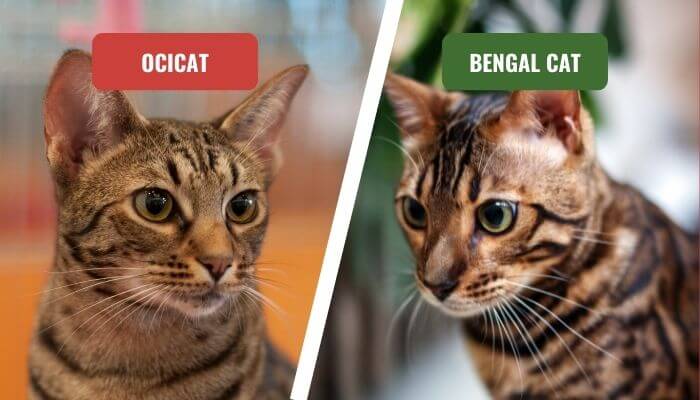
In contrast, Bengals have a large rounded head, short, rounded ears, a thick, silky coat, and their coats are often patterned with rosettes, round spots, or marbling.
Bengals may have striped legs while Ocicats have stretched spots that create patterns on their legs.
Where To Buy An Ocicat
Ocicats have been in the UK since the 1980s but the breed remains relatively rare.
There are a few dedicated Ocicat breeders in the UK, however it is likely those wanting Ocicat kittens will have to join a waiting list.
A well-bred Ocicat can cost between £500 – £1000.

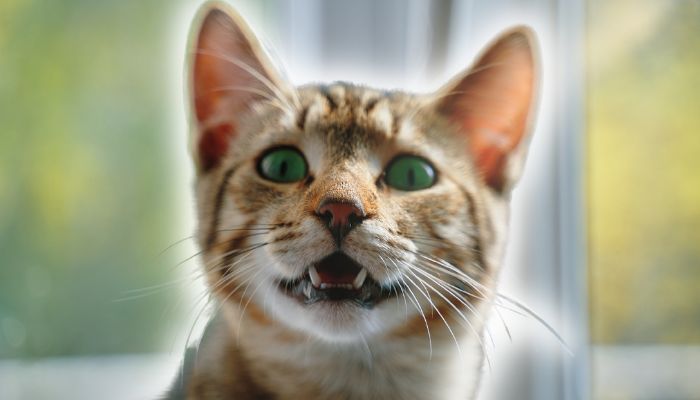
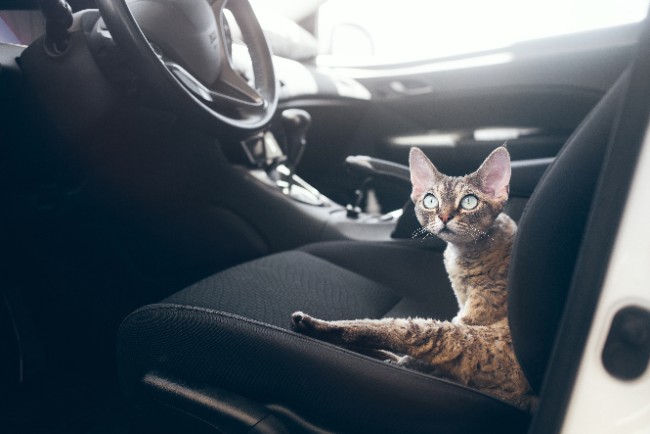
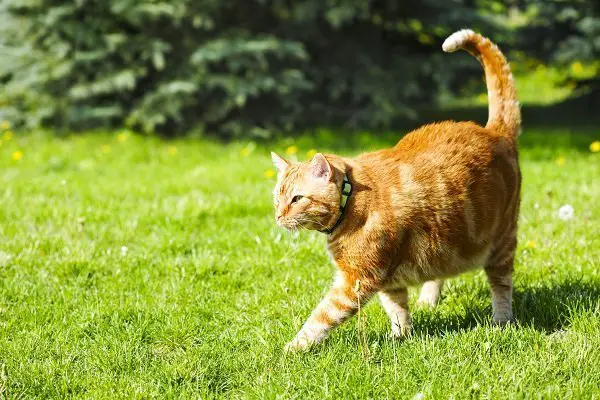
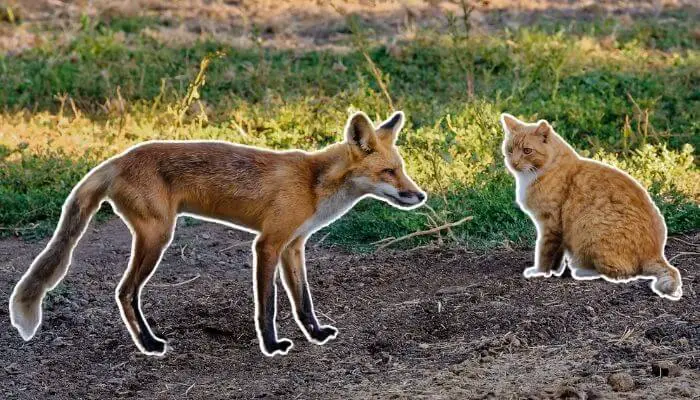

Leave a Comment